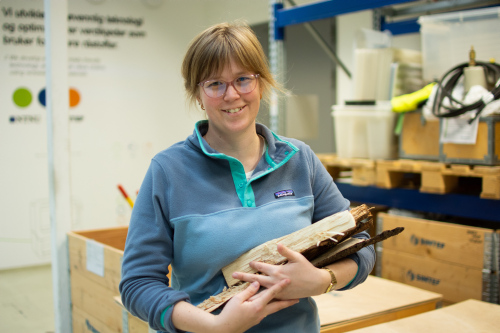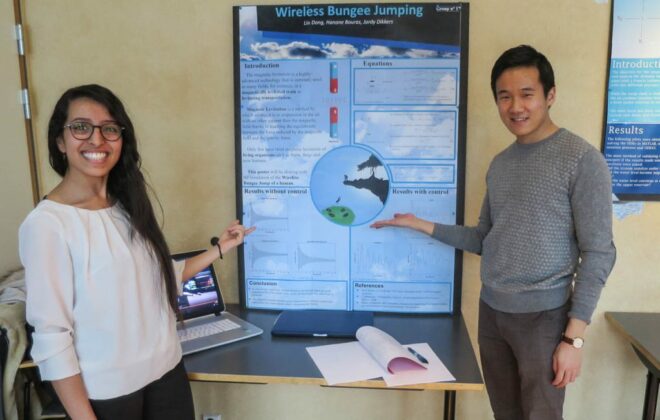All you need to know about buildings to plan sustainable, green neighbourhoods

When you are planning a neighbourhood with no greenhouse gas emissions, you need a thorough understanding of a neighbourhood’s buildings, their age, size, materials, energy use and state of renovation. Our new model is a very useful tool for this.
The buildings we work and live in account for a large share of a city’s greenhouse gas emissions. The materials we use to build a house, the electricity we use when living in it, and the energy we use when renovating all cause greenhouse gas footprints.
When planning neighbourhoods with little or no emissions, we need to understand how buildings make these footprints. If city planners have information about a building’s energy use, they can estimate a building’s long-term energy needs and make the choices necessary for a neighbourhood to become a zero emission neighbourhood. In the ZEN Research Centre, we have developed a model that will help city planners to do just that.
Estimates a building’s emissions
Our model, which is called “a dynamic building stock model,” assesses long-term energy use and related greenhouse gas emission scenarios. The model is broad and flexible, and can be used to model any neighbourhood, district or municipality where building stock data (such as building types and age) is available.
This is how it works
The model uses a description of the buildings in question and the plans for future construction, demolition and renovation to make energy use estimations. This is how it works in detail:
- The neighbourhood building stock is divided up in floor area of different archetypes defined by building types, their age, energy standard and need for renovation.
- Hourly energy profiles are used to estimate the demand for total heat and electricity loads.
- Monthly or yearly carbon emission intensities are defined for each type of energy supply.
By combining these elements, we can estimate hourly, monthly or yearly delivered energy and greenhouse gas emissions for a neighbourhood. The model helps us to make energy and emission friendly plans for future neighbourhood developments.
Testing the model with two case studies
We tested the model with two very different case studies:
- A hypothetical neighbourhood consisting of two types of houses (single family houses and apartment blocks).
- The Norwegian University of Science and Technology’s (NTNU) Gløshaugen campus.
We demonstrated that the model is capable of long-term analyses of both simple and complex neighbourhoods. This gives us insight into possible energy use and patterns of greenhouse gas emissions in the future.
In the hypothetical case, the model describes how increasing energy efficiency helps the neighbourhood’s buildings improve over time. This is due to the renovation and demolition of older buildings, and the construction of new buildings with low energy needs. Compared to today, estimated emissions decrease by 46% in 2070 for a baseline scenario and by an additional 8% for a more advanced renovation scenario. In the case of the Gløshaugen Campus, we estimated hourly and monthly loads during the current year, as well as delivered energy and greenhouse gas emissions over time.
The model’s strength
The model’s flexibility is its strength because it makes analyzing different kinds of complex neighbourhoods possible. We examined possible future pathways by changing input associated with the neighbourhood buildings, energy and greenhouse gas emissions. Also, various energy-efficiency measures can be analyzed and compared with each other.
Our model creates roadmaps for decision makers who plan future development of a neighbourhood and corresponding energy supply system.
Why this model is useful
Our model can create “roadmaps” that are useful for decision makers. It will help electricity and district heating companies when planning efficient energy supply systems, and generally support decision making in a climate mitigation policy context. The energy standard of new buildings and their use can play an important role in making our neighbourhoods emission free. This model is a useful tool helping us to plan the neighbourhoods of the future.
Note:
The blogpost is based on the report:
Næss, J.S., Sandberg, N.H., Nord, N., Vestrum, M.I., Lausselet, C., Woszczek, A., Rønneseth, Ø. & Brattebø, H. (2018) Neighbourhood building stock model for long-term dynamic analyses of energy demand and GHG emissions, ZEN Report 2, NTNU/SINTEF
Blog post originally published on www.ntnutechzone.no on May 23rd, 2019

Carine Lausselet
Carine Lausselet is a PhD Candidate at FME ZEN, NTNU – Industrial Ecology and Department of Energy and Process Engineering.
Tags In
Search
Søk
Categories
- Arctic Research
- Arkitektur
- Bærekraft
- Bioingeniørfag
- Biologi
- Biology
- Biomedical Laboratory Science
- Biotechnology
- Bioteknologi
- Chemical Engineering
- Chemistry
- Climate
- Computer Science
- Datateknologi
- Digital
- Elektronikk
- Energi
- Energi
- Energy
- Engineering
- Engineering
- Environment
- Food Science
- Forskning
- Fysikk
- Fysikk
- Havbruk
- Informasjonsteknologi
- Informasjonsteknologi
- Ingeniørvitenskap
- Kjemi
- Kjemisk prosessteknologi
- Kjemisk prosessteknologi
- Kreftbehandling
- Kybernetikk
- Marine Technology
- Materialer
- Materials Science
- Materialteknologi
- Matvitenskap
- Meninger
- Miljø
- Min ph.d.
- My PhD
- My PhD
- My postdoc
- Nanotechnology
- Nanoteknologi
- Ocean
- Oil and gas
- Physics
- Research
- Simulering og visualisering
- Spør en forsker
- Studentliv
- Sustainability
- Ukategorisert
- Universitetsliv
- University Life
Kategorier
- Arctic Research
- Arkitektur
- Bærekraft
- Bioingeniørfag
- Biologi
- Biology
- Biomedical Laboratory Science
- Biotechnology
- Bioteknologi
- Chemical Engineering
- Chemistry
- Climate
- Computer Science
- Datateknologi
- Digital
- Elektronikk
- Energi
- Energi
- Energy
- Engineering
- Engineering
- Environment
- Food Science
- Forskning
- Fysikk
- Fysikk
- Havbruk
- Informasjonsteknologi
- Informasjonsteknologi
- Ingeniørvitenskap
- Kjemi
- Kjemisk prosessteknologi
- Kjemisk prosessteknologi
- Kreftbehandling
- Kybernetikk
- Marine Technology
- Materialer
- Materials Science
- Materialteknologi
- Matvitenskap
- Meninger
- Miljø
- Min ph.d.
- My PhD
- My PhD
- My postdoc
- Nanotechnology
- Nanoteknologi
- Ocean
- Oil and gas
- Physics
- Research
- Simulering og visualisering
- Spør en forsker
- Studentliv
- Sustainability
- Ukategorisert
- Universitetsliv
- University Life



